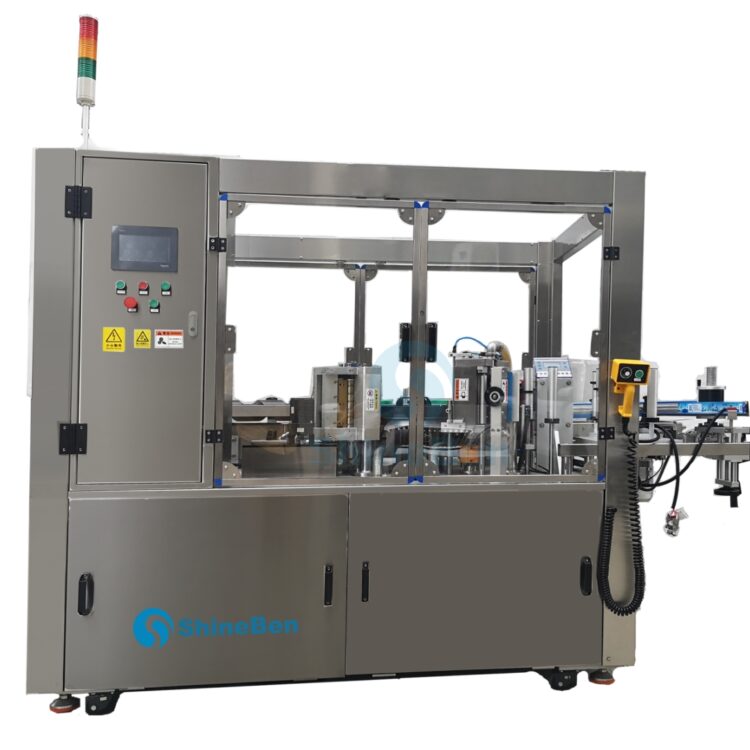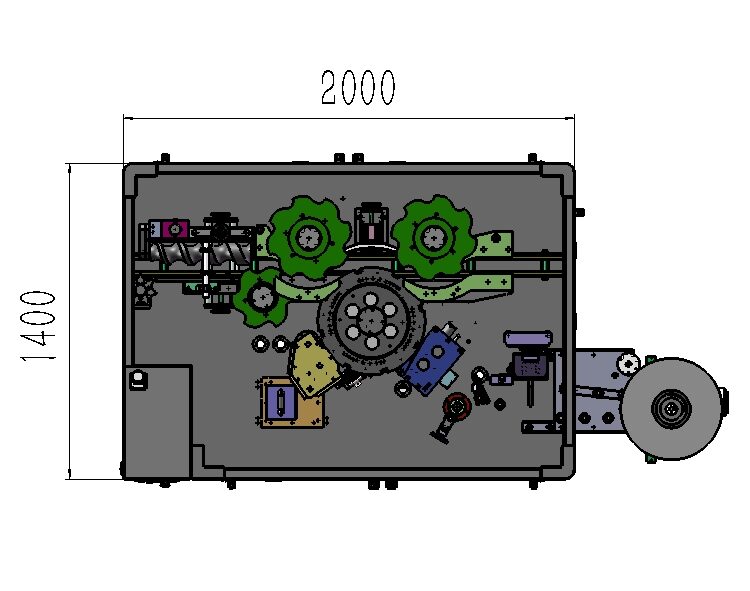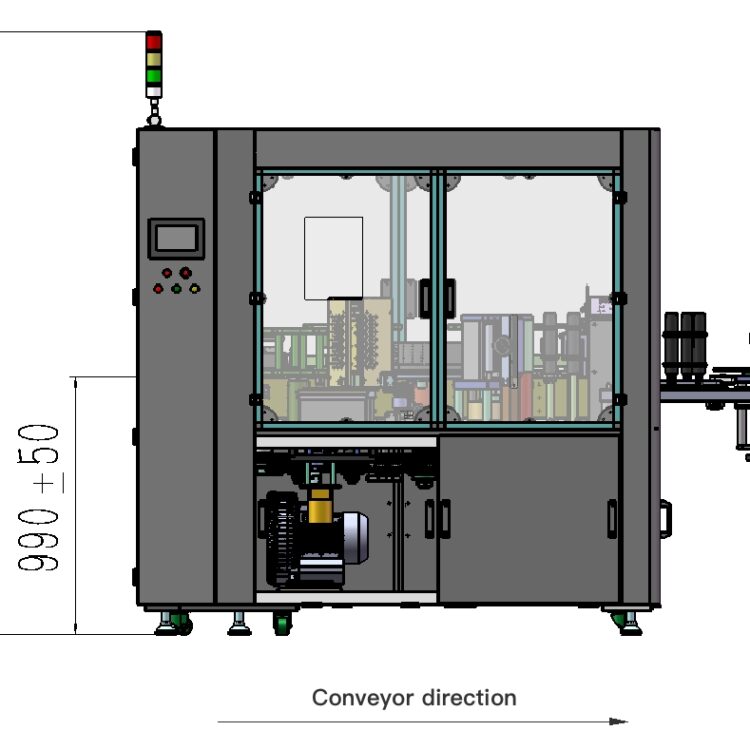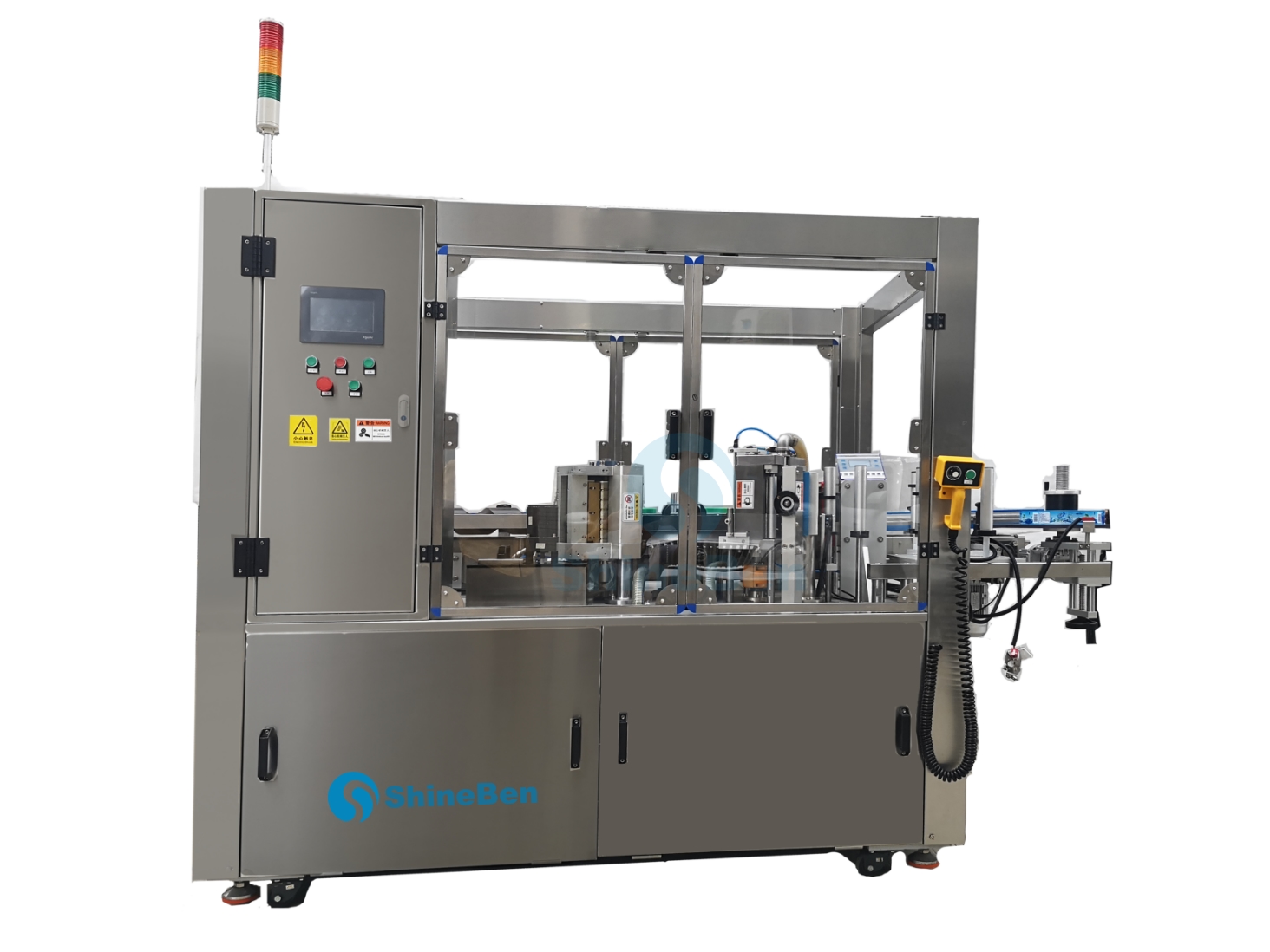The linear hot melt glue labeler is a novel labeling machine designed for linear, continuous labeling. Bottles transported by the intelligent bottle divider are separated to a certain distance by the bottle divider screw according to the spacing of the star wheel. Subsequently, the bottle is conveyed to the labeling belt by the bottle-in star wheel. Precise calculations ensure that when the bottle reaches the labeling belt, the adhesive-coated label aligns perfectly.
When the bottle reaches the bottle-in screw photocell detection position, the PLC controls the labeling system to apply the label. After completing a labeling action, a high-speed cutter cuts off the label. The adoption of Schneider’s ultra-small inertia high-speed servo motor ensures the accuracy and stability of high-speed labeling and cutting.
The cut label is transferred to the vacuum suction drum and fed into the upper glue system. In this part, the system applies glue to the edges of both ends of the label. This method of gluing minimizes the consumption of hot melt glue. When the labeled and glued label is transferred to the labeling position, it adheres accurately and effectively to the container. Since the container rotates during the label transfer process, the label can be smoothly and tightly affixed to the bottle. At the end of the glue application, the glue strip forms a good label overlap seal, completing the labeling process.
The main labeling process is detailed as follows: screw bottle division, bottle feeding, detection, label cutting, label suction, glue application, label sticking, label smoothing, and bottle ejection.
The linear hot melt glue labeler has a wide range of applications and is suitable for cylindrical containers such as plastic bottles, glass bottles, and metal cans in industries such as detergent, beverage, mineral water, and food. It can label the circumferential surfaces of these containers with OPP film, pearl film, paper-plastic composite film, paper labels, and other materials. Since non-shrinkable materials are used, the printed patterns on the labels will not deform, ensuring the aesthetic appeal of the product packaging. Additionally, this approach significantly reduces packaging material costs.








